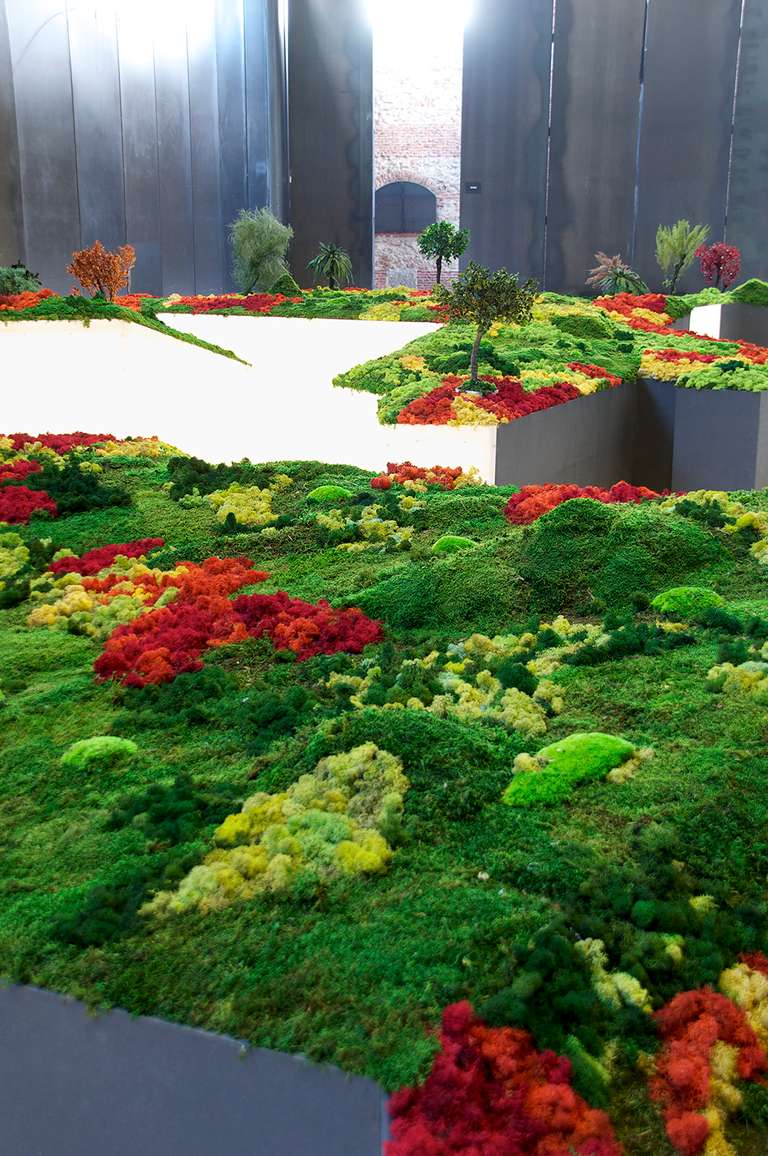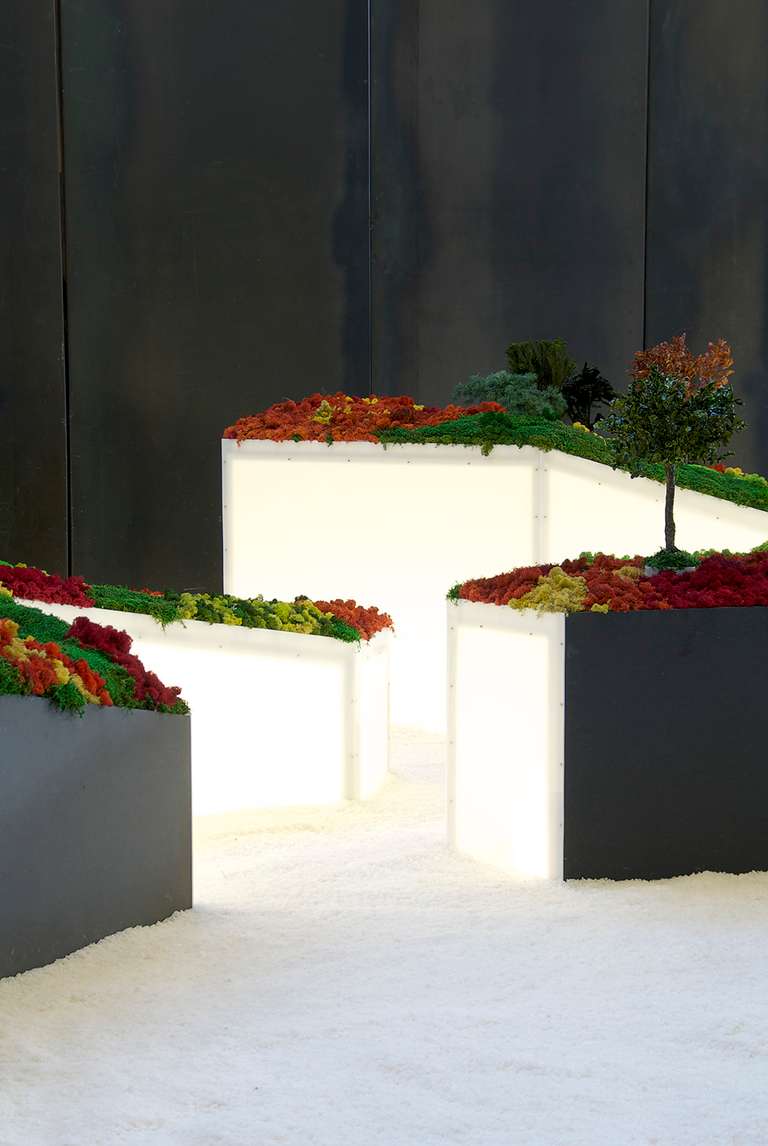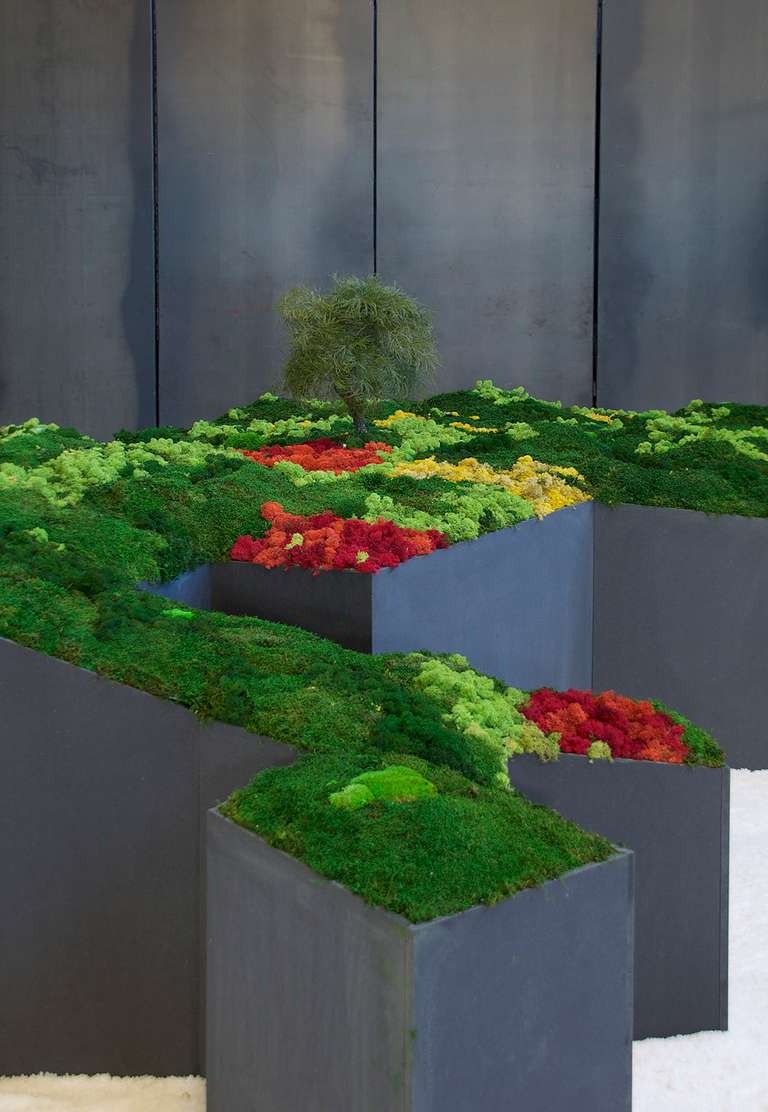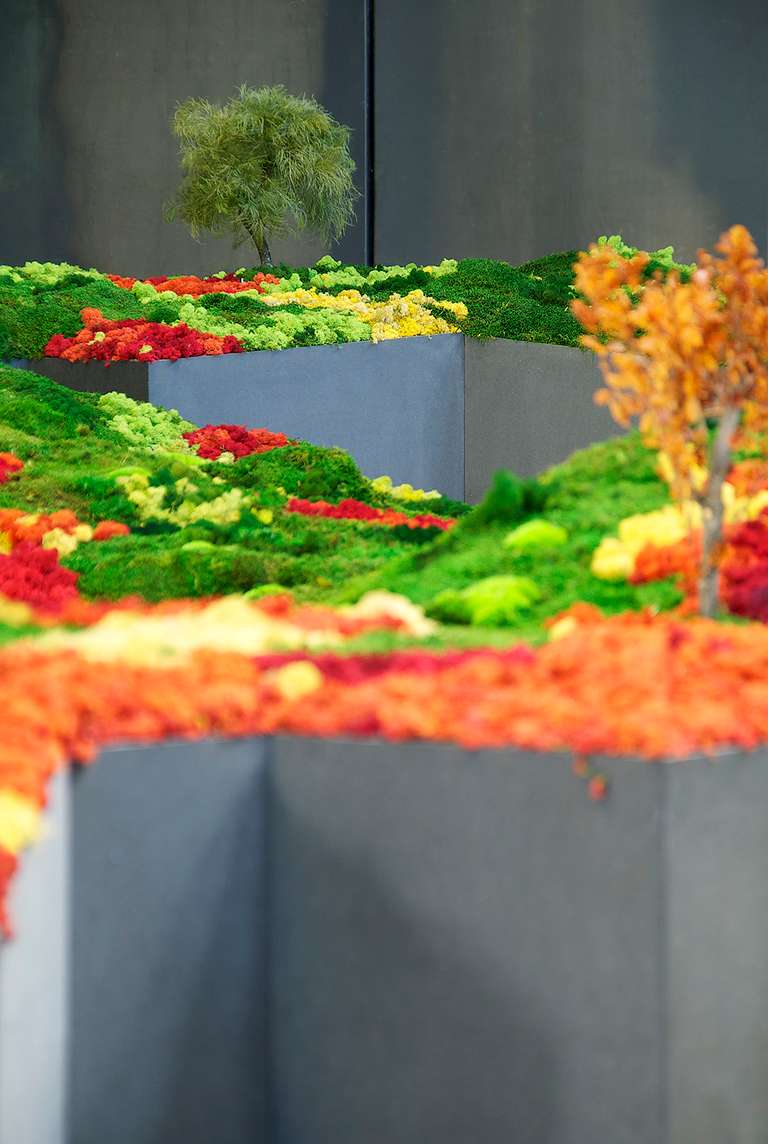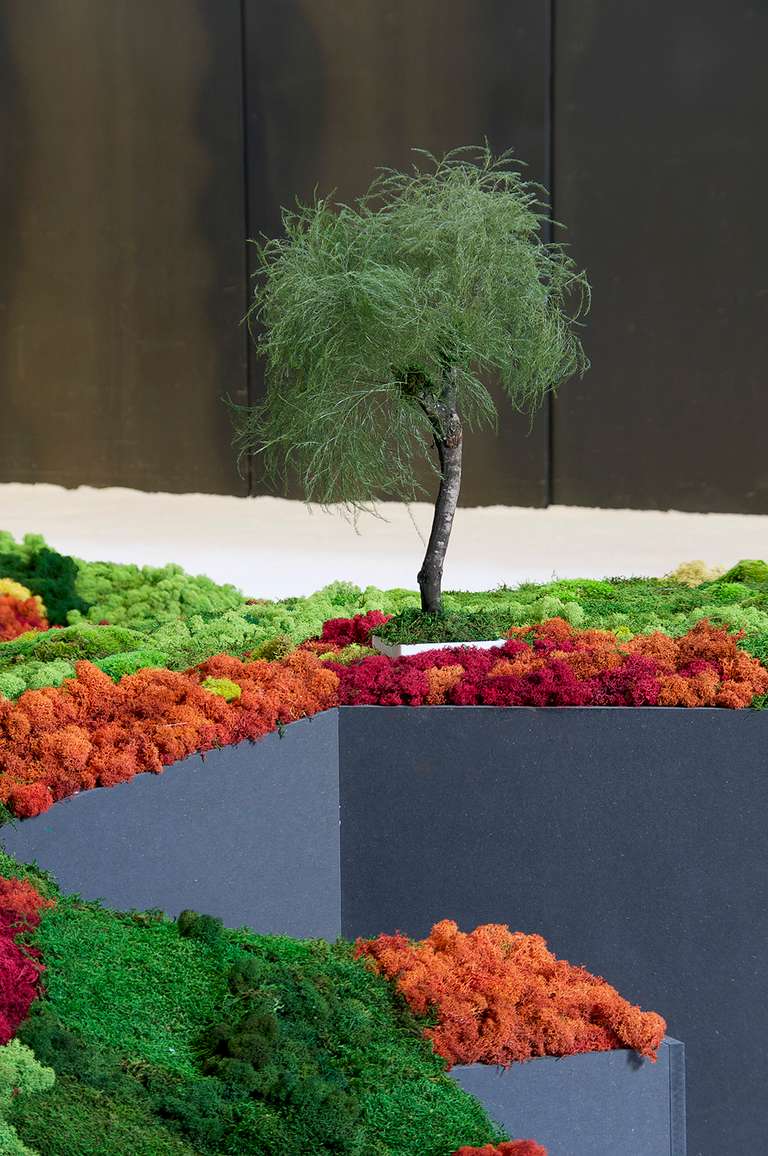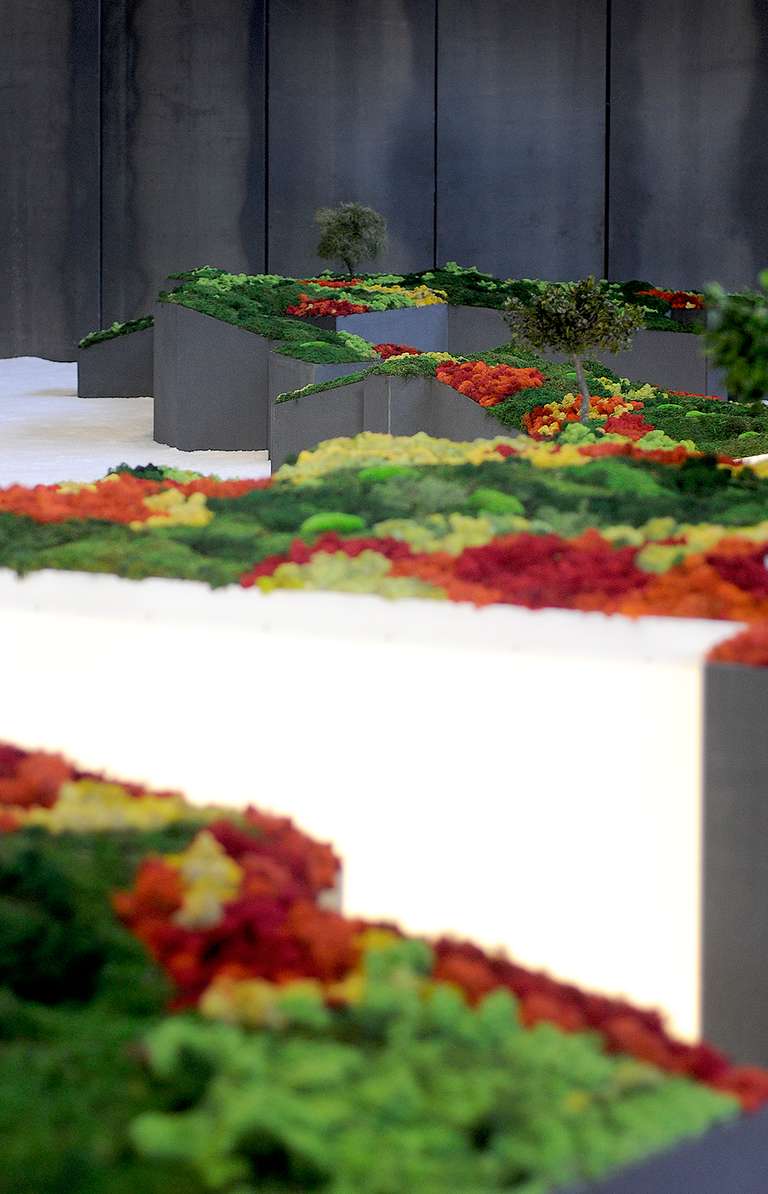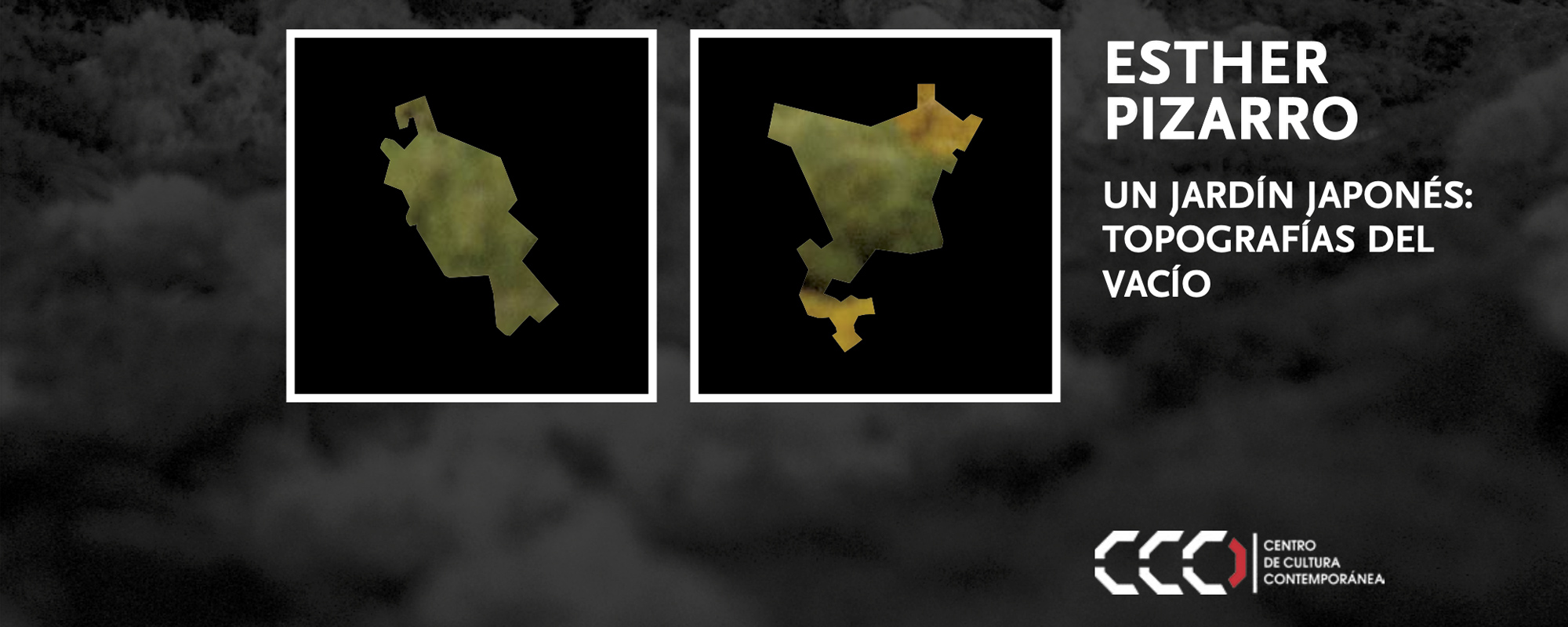A JAPANESE GARDEN :: TOPOGRAPHIES OF THE VOID © 2014
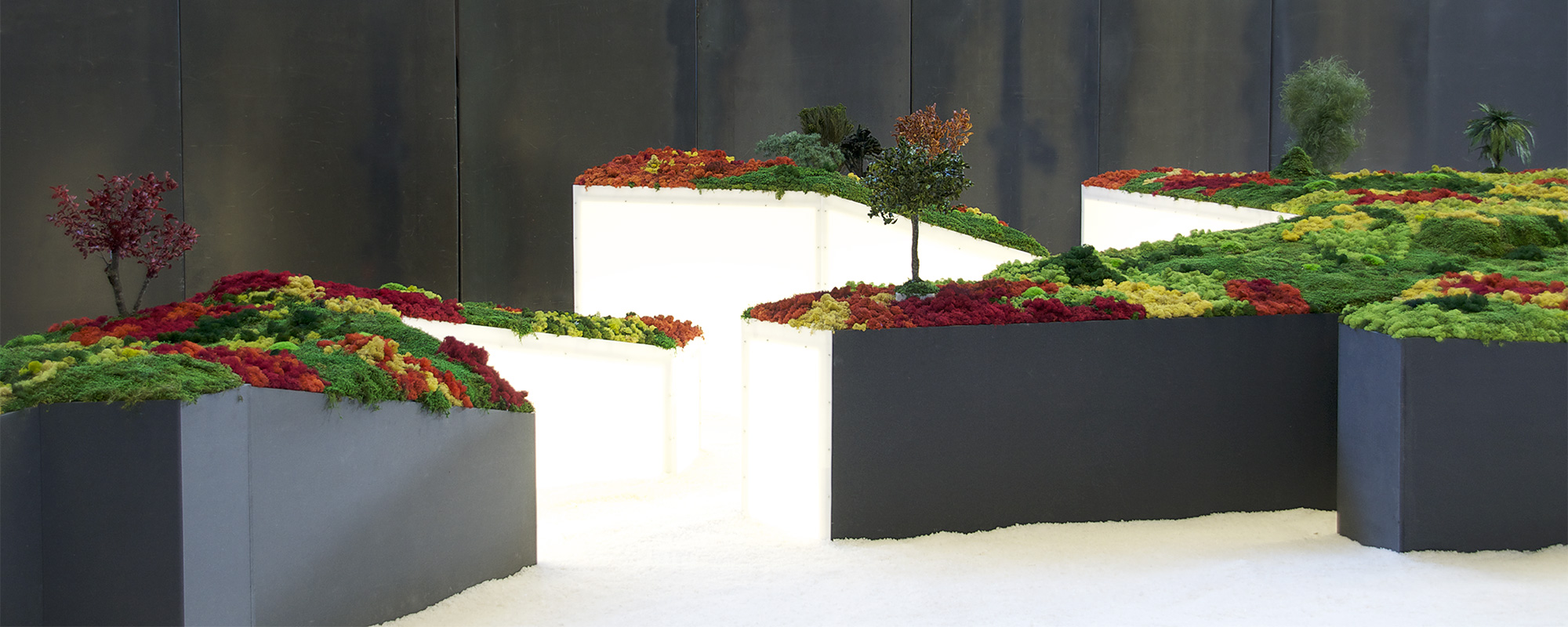
A Japanese Garden :: Topographies of the Void, 2014
Freeze-dried and preserved plant elements, wood fibre, methacrylate, leds, salt.
8 Modules of variable sizes
1200 x 3600 x 140 cm (set)
Itinerant installation
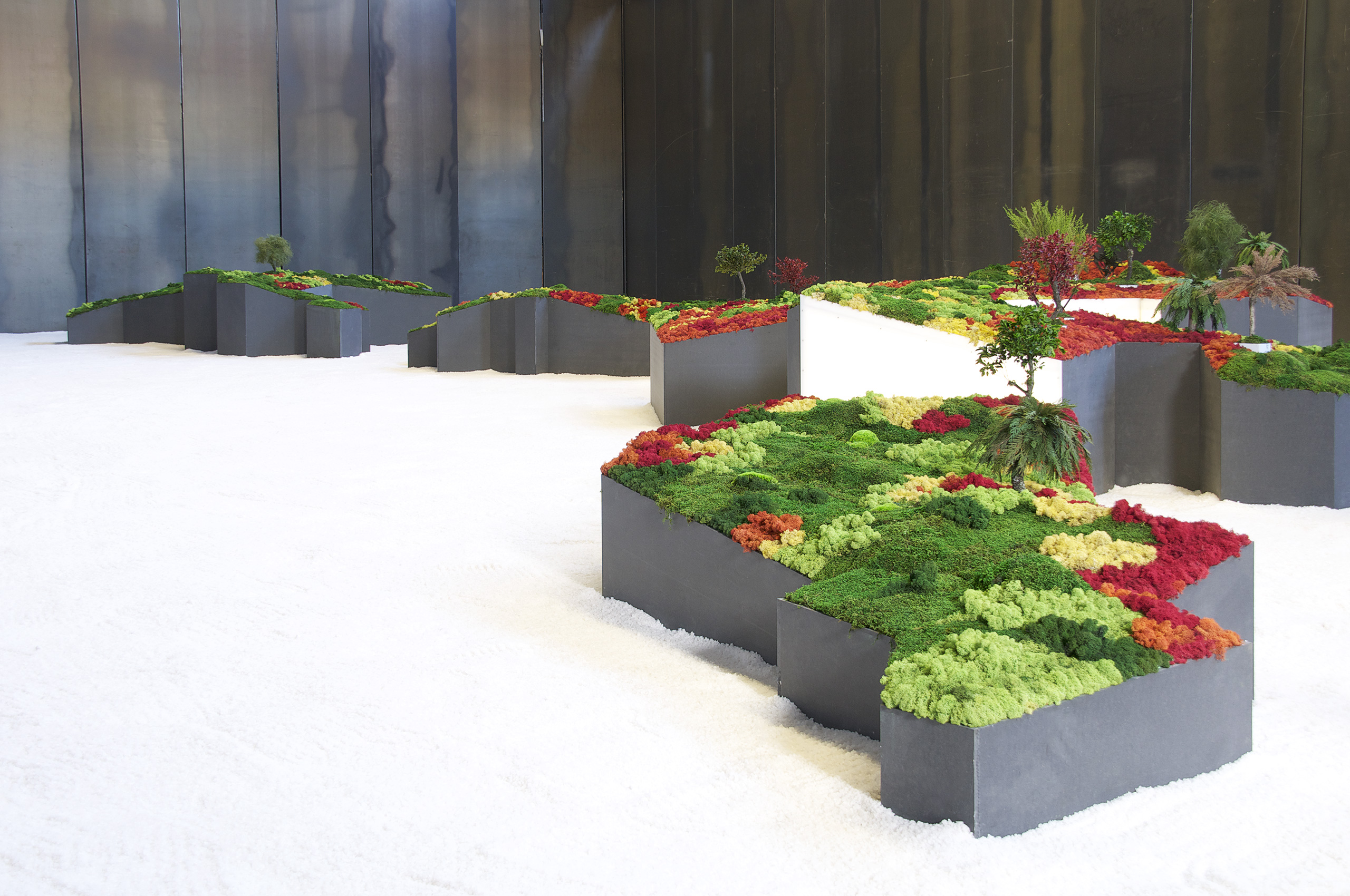
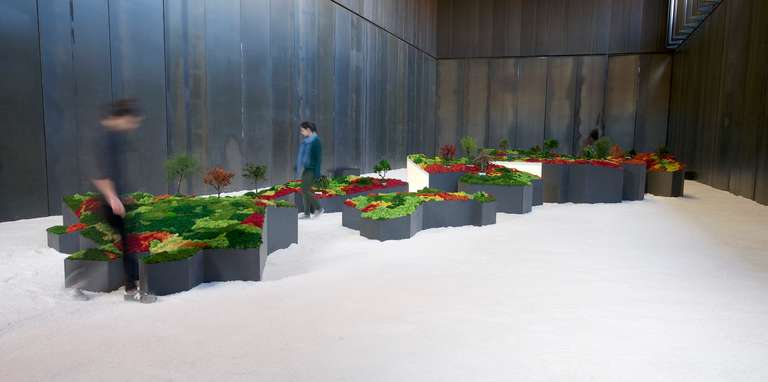
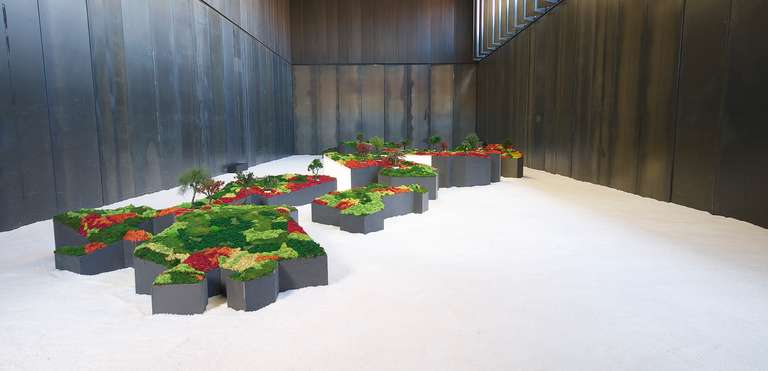
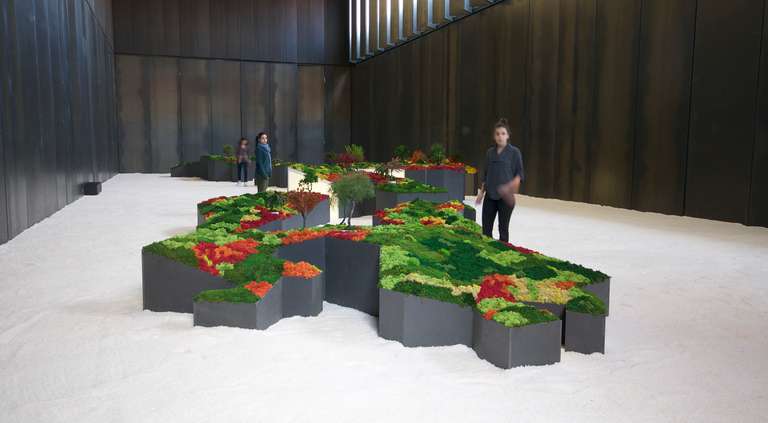
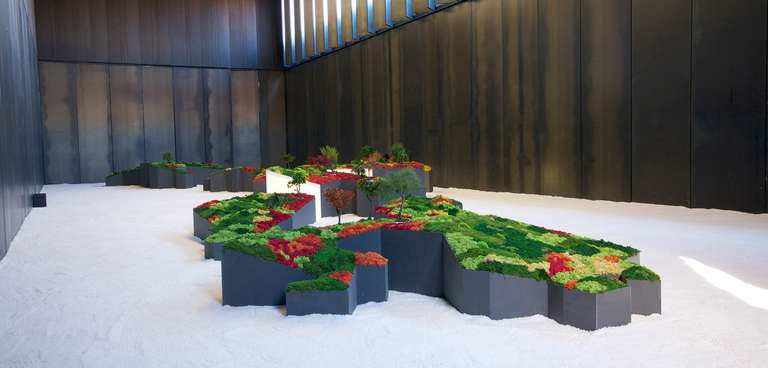
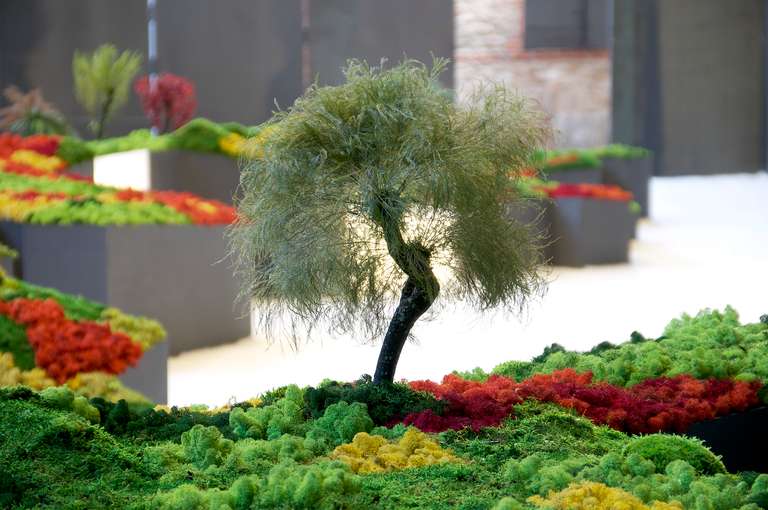
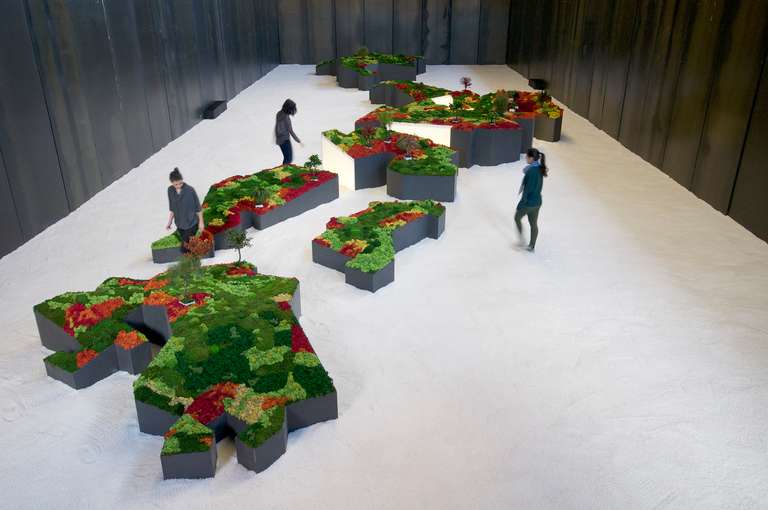
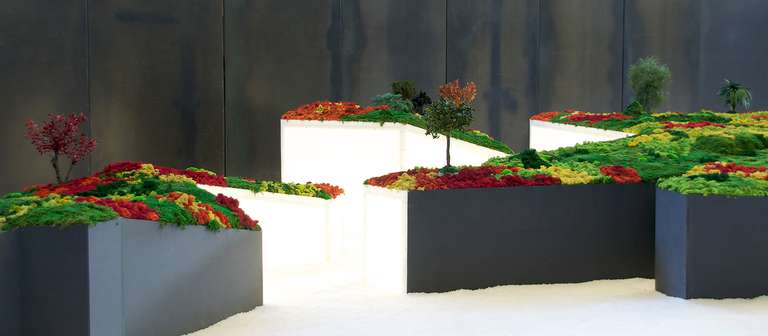
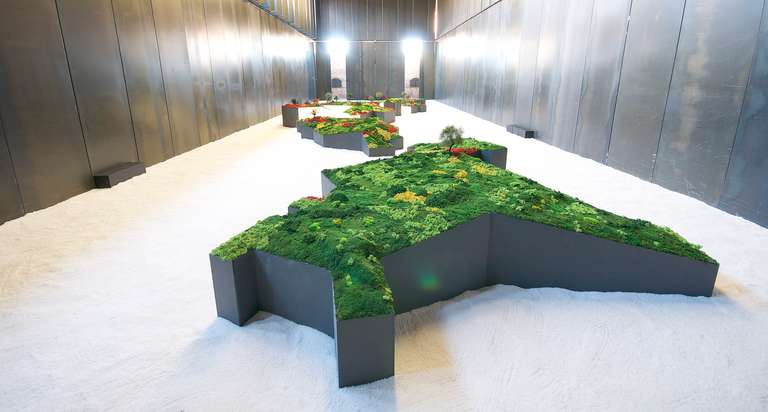
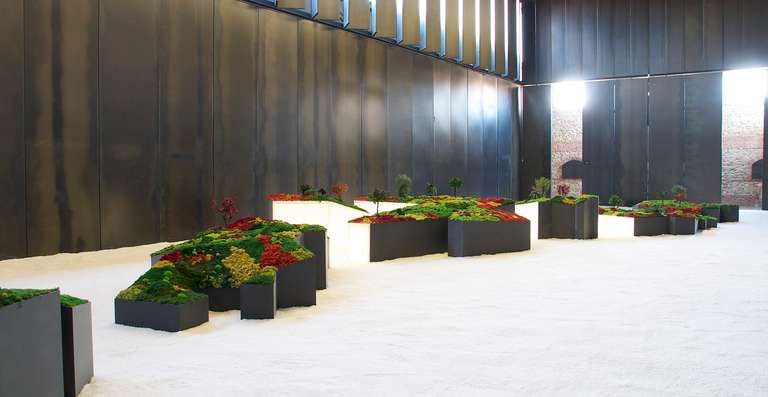
A Japanese garden :: Topographies of the void confronts the formal and conceptual principles of the Japanese garden with those of the world of cartography and the map. This particular garden is built topographically on the outline of the map of the Japanese archipelago where, taking as its basis the political map that divides the country into eight regions, it generates eight sculptural containers with visual continuity between them. The vegetation layer, made up of preserved and freeze-dried mosses and plants, is articulated on the basis of the demographic chart of Japan's population density. The reds indicate the most populated areas, passing through a gradual degradation of oranges, yellows, light greens and dark greens for the less populated areas. Twenty bonsai trees are positioned within this vegetal cartography to indicate the most populated cities in the country.
A sea of salt spreads over the floor of the room, blurring the limits of the sculptural volumes that act as cliffs. The luminous attractors, located on the central island of the Japanese archipelago, follow the cycle of nature from day to night, until they reach total darkness and begin again.
Multiple scales converge in the project: territorial, landscape, cartographic, human, urban and domestic. The viewer is constantly exposed to these changes of scale. It is a garden that sharpens all the senses: sight (through its intense colour), touch (through the singular texture of the materials), smell (with the singular smell of the plants), taste (thanks to the immense sea of salt) and hearing (with the activation of sound recordings from the sea that evoke, as in the typical dry garden, the importance of water).
CREDITS::
Conceptualisation: Esther Pizarro
Production: Esther Pizarro Studio
Technology: Markus Schroll
Curator: Menene Gras Balaguer
Project carried out in the framework of the Dual Year Spain-Japan 2013-14 with the support of Matadero Madrid and Casa Asia.
EXHIBITED AT::
MataderoMadrid, Nave 16, Línea de programación: Gran Escala. “Un jardín japonés: Topografías del vacío”. Comisariado: Menene Gras Balaguer, Proyecto realizado en el marco del Año dual España-Japón 2013-2014, Madrid, 31/01/2014 al 04/05/2014
Casa Asia, Pabellón la Puríssima, Recinto Modernista del Hospital de Sant Pau. “Un jardín japonés: Topografías del vacío”. Comisariado: Menene Gras Balaguer, Barcelona, 09/07/2014 al 02/11/2014
Centro Cultura Contemporánea, Sala Crucero Bajo del Hospital Real de Granada. “Un jardín japonés: Topografías del vacío”. Comisariado: Menene Gras Balaguer, Granada, 07/11/2014 al 20/01/2015. Edición de catálogo: “Un jardín japonés: Topografías del vacío”, (2014). ISBN: 978-84-338-5723-1.
Museo de San Telmo. “Un jardín japonés: Topografías del vacío”. Comisariado: Menene Gras Balaguer, San Sebastián, 13/02/2015 al 17/05/2015
Museo Real Casa de la Moneda. “Un jardín japonés: Topografías del vacío”. Comisariado: Menene Gras Balaguer, Segovia, 11/09/2015 al 17/01/2016
IFEMA Feria de Madrid. Puerta Norte. “Un jardín japonés: Topografías del vacío”. Madrid, cesión temporal del 26/02/2016 al 26/02/2021
ASSOCIATED CATALOGUE ::
Pizarro Esther (2014). Catálogo exposición: Un Jardín Japonés: topografías del vacío. Textos: Inmaculada López, Carlota Álvarez Basso, Menene Gras Balaguer y Esther Pizarro. Extensión: 128 páginas. Edita: Universidad de Granada, Centro de Cultura Contemporánea. ISBN: 978-84-338-5723-1, DL: GR / 2528-2014
FURTHER INFORMATION ::
Video documental Casa Asia, Pabellón la Puríssima, Recinto Modernista del Hospital de Sant Pau.
Video documental Centro Cultura Contemporánea, Sala Crucero Bajo del Hospital Real de Granada.

